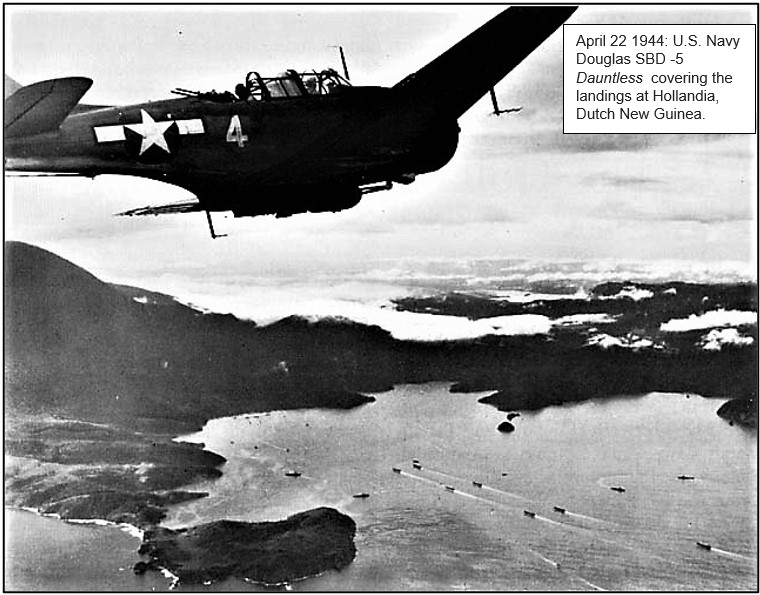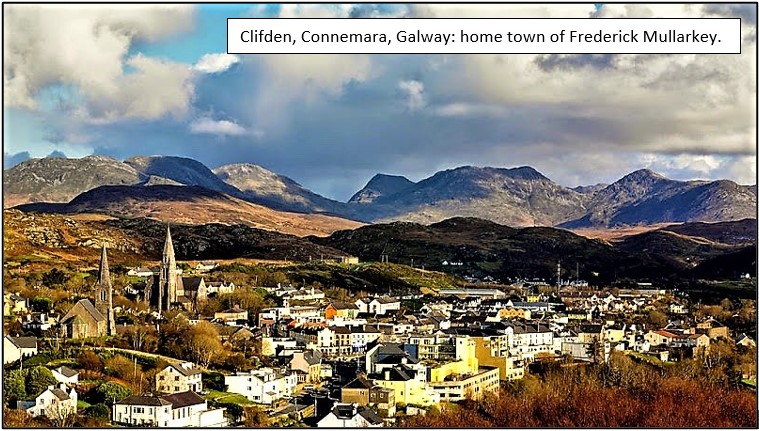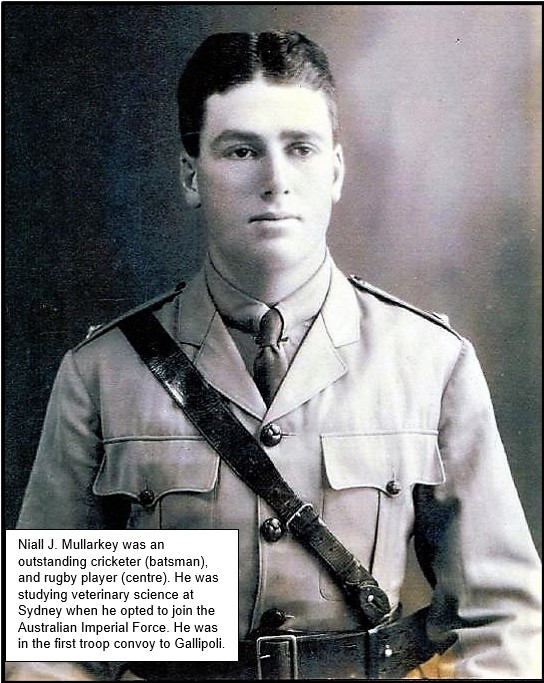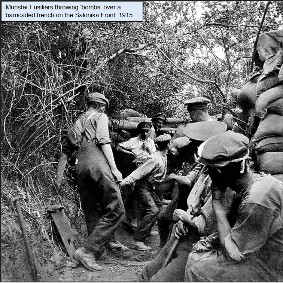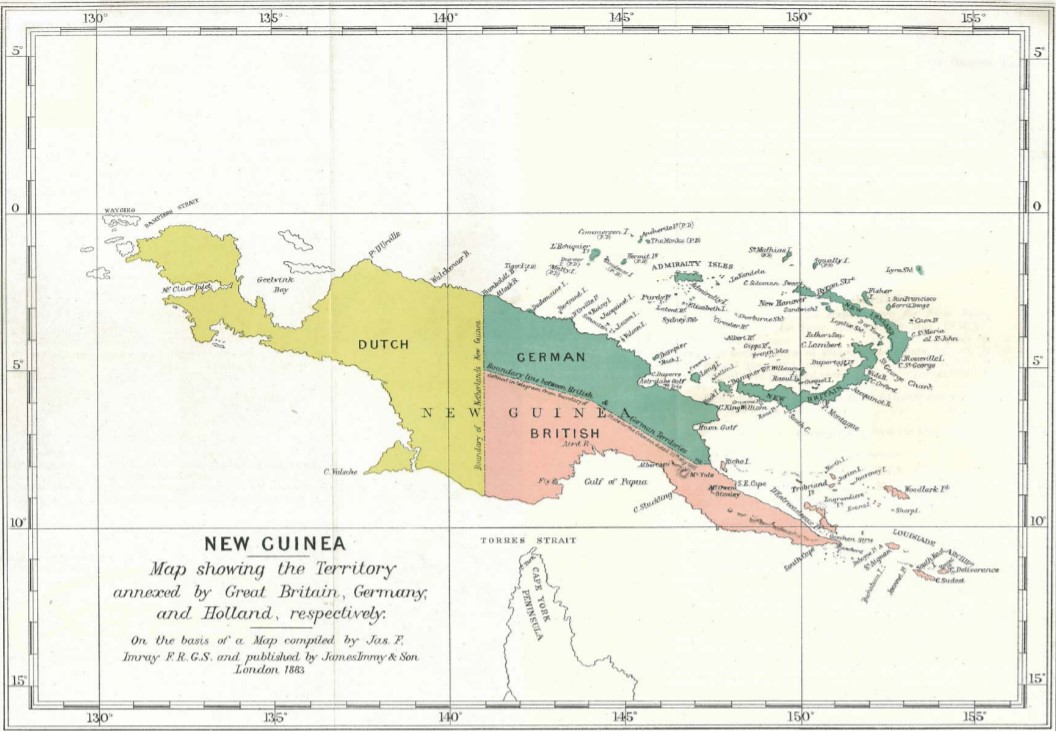
THREAD
1/30
At the outbreak of war in Europe, Tonga (then pop. 33,000) had been a British protectorate since 1900, administered by New Zealand.
In Sept 1939 tiny Tonga declared war on Germany’s 79 million.
On 8 December 1941 Tonga also declared war against Japan’s 73 million.
1/30
At the outbreak of war in Europe, Tonga (then pop. 33,000) had been a British protectorate since 1900, administered by New Zealand.
In Sept 1939 tiny Tonga declared war on Germany’s 79 million.
On 8 December 1941 Tonga also declared war against Japan’s 73 million.

2/
Queen Sālote called for volunteers to join the Tonga Defence Force (TDF).
Almost every adult male in the kingdom stepped forward. By 1942 the TDF had 2,000 men.
9th May 1942: To help withstand the Japanese southward juggernaut, 7,650 men of US Task Force 0051 arrived at Tonga.
Queen Sālote called for volunteers to join the Tonga Defence Force (TDF).
Almost every adult male in the kingdom stepped forward. By 1942 the TDF had 2,000 men.
9th May 1942: To help withstand the Japanese southward juggernaut, 7,650 men of US Task Force 0051 arrived at Tonga.

To the west, the crucial Battle of the Coral Sea was in progress. Its result thwarted a Japanese thrust to Port Moresby, Papua.
The TDF, organized & commanded by New Zealand officers, carefully chose 28 men to join the First Fiji Guerrillas at their training area at Navua, Fiji.
The TDF, organized & commanded by New Zealand officers, carefully chose 28 men to join the First Fiji Guerrillas at their training area at Navua, Fiji.

4/
During the SWW the subsistence-based Tongan people donated enough funds for 3 Spitfires to the British war effort.
A total of £15,000 was raised in Tonga for this purpose.
They were named after their beloved Queen, her consort “Prince Tungi” and her GGr/father “King Tupou I”.

During the SWW the subsistence-based Tongan people donated enough funds for 3 Spitfires to the British war effort.
A total of £15,000 was raised in Tonga for this purpose.
They were named after their beloved Queen, her consort “Prince Tungi” and her GGr/father “King Tupou I”.


5/
The Tongan platoon was exceedingly proud of representing their country.
They were “equal to the Fijians in physique, and having had three years' training, their precision on the parade ground was unsurpassed”.
The Tongans had a lot to learn from the Fijians in bush-craft.
The Tongan platoon was exceedingly proud of representing their country.
They were “equal to the Fijians in physique, and having had three years' training, their precision on the parade ground was unsurpassed”.
The Tongans had a lot to learn from the Fijians in bush-craft.

6/30
The two peoples, although sometimes having been enemies from ancient times right up to the late 1800s, worked well together in Fiji in 1943 because of their common ideals, and the hospitality of the Fijians.
(Tongans are mostly Polynesian; the Fijians mostly Melanesian).
The two peoples, although sometimes having been enemies from ancient times right up to the late 1800s, worked well together in Fiji in 1943 because of their common ideals, and the hospitality of the Fijians.
(Tongans are mostly Polynesian; the Fijians mostly Melanesian).
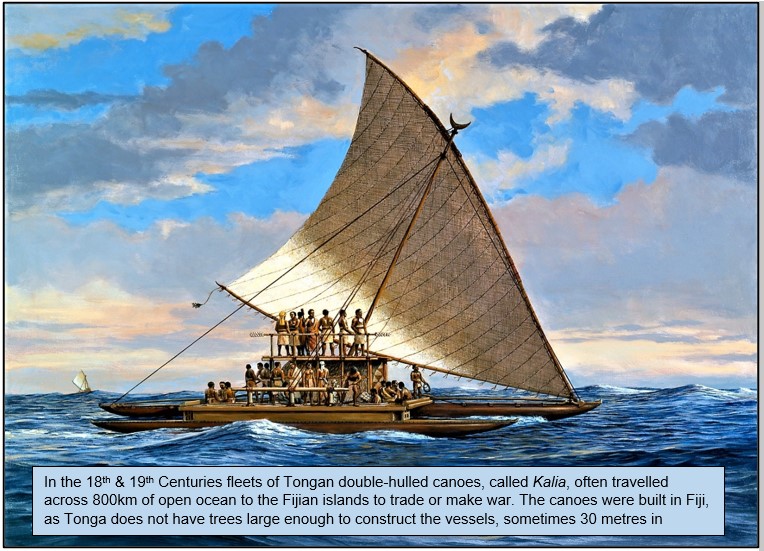
7/
At Wainadoi, Fiji, the Tongan Commandos enjoyed their first swim in fresh running water: there are no high hills, rivers or thick jungle in Tonga.
They soon adapted to the harsh and muggy conditions.
The tough jungle training soon transformed the Tongans into fine commandos.
At Wainadoi, Fiji, the Tongan Commandos enjoyed their first swim in fresh running water: there are no high hills, rivers or thick jungle in Tonga.
They soon adapted to the harsh and muggy conditions.
The tough jungle training soon transformed the Tongans into fine commandos.

8/
Commander of the Tongan platoon was Lieutenant Ben Masefield, a celebrated New Zealand athlete and rifle shot. A born leader, his sharpshooting was renowned.
Like Robin Hood, he wore a unique green camouflage suit and soft green hat pinned up at one side with a feather.
Commander of the Tongan platoon was Lieutenant Ben Masefield, a celebrated New Zealand athlete and rifle shot. A born leader, his sharpshooting was renowned.
Like Robin Hood, he wore a unique green camouflage suit and soft green hat pinned up at one side with a feather.

9/30
Second in Charge of the platoon was Lt Henry Taliai, a renowned Tongan personality and sportsman, having twice played rugby for Tonga against Fiji.
He was highly regarded, energetic and full of energy, and was one of six children in a church-going Tongan family.

Second in Charge of the platoon was Lt Henry Taliai, a renowned Tongan personality and sportsman, having twice played rugby for Tonga against Fiji.
He was highly regarded, energetic and full of energy, and was one of six children in a church-going Tongan family.


10/
Training continued for months.
The 28 Tongans, plus NZ NCOs, increased the strength of Captain Tripp's unit (1st Commando Fijian Guerrillas, or “South Pacific Scouts”) to 203 men before it left Fiji’s shores.
Finally, they embarked on the Attack Transport ‘President Hayes’.

Training continued for months.
The 28 Tongans, plus NZ NCOs, increased the strength of Captain Tripp's unit (1st Commando Fijian Guerrillas, or “South Pacific Scouts”) to 203 men before it left Fiji’s shores.
Finally, they embarked on the Attack Transport ‘President Hayes’.


11/
The commandos were fascinated by the ship’s modern machinery and thrilled to see movies for the first time, despite not understanding the language.
They unloaded at Guadalcanal via Higgins boats onto the beach in the record time of 4 hrs, much to the relief of the captain.
The commandos were fascinated by the ship’s modern machinery and thrilled to see movies for the first time, despite not understanding the language.
They unloaded at Guadalcanal via Higgins boats onto the beach in the record time of 4 hrs, much to the relief of the captain.

In their free time the Commandos avoided boredom by playing sports and competitions. Crocodile hunting, high jump, tug-of-war (won by the Tongans), coconut-tree climbing (won easily by a Fijian).
The Commandos were joined by the "Dukwasi" unit, 24 hand-picked Solomon Islanders.

The Commandos were joined by the "Dukwasi" unit, 24 hand-picked Solomon Islanders.


13/
For 2 months on Guadalcanal 1943 the frustrated Commandos mopped up the few remaining Japanese units.
They did this so efficiently that Maj Gen. Griswold included them in the upcoming “Operation Toenails”, part of the greater “Operation Cartwheel”, aimed at isolating Rabaul.

For 2 months on Guadalcanal 1943 the frustrated Commandos mopped up the few remaining Japanese units.
They did this so efficiently that Maj Gen. Griswold included them in the upcoming “Operation Toenails”, part of the greater “Operation Cartwheel”, aimed at isolating Rabaul.

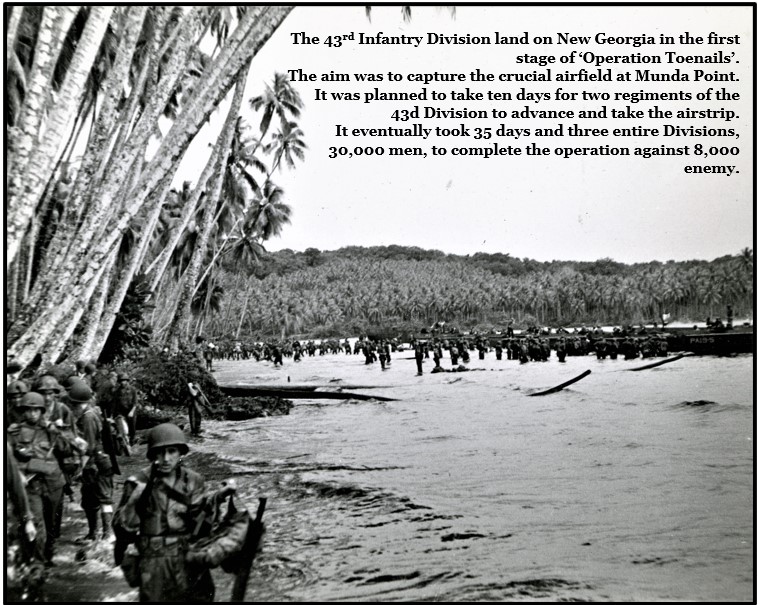
14/
As the Allies fought the Japanese in New Guinea, US forces moved north-west through the Solomons, with the objective of neutralizing the vital enemy base at Rabaul.
The all-important airfield at Munda Point on New Georgia was a step closer to Rabaul.
It had to be secured.

As the Allies fought the Japanese in New Guinea, US forces moved north-west through the Solomons, with the objective of neutralizing the vital enemy base at Rabaul.
The all-important airfield at Munda Point on New Georgia was a step closer to Rabaul.
It had to be secured.

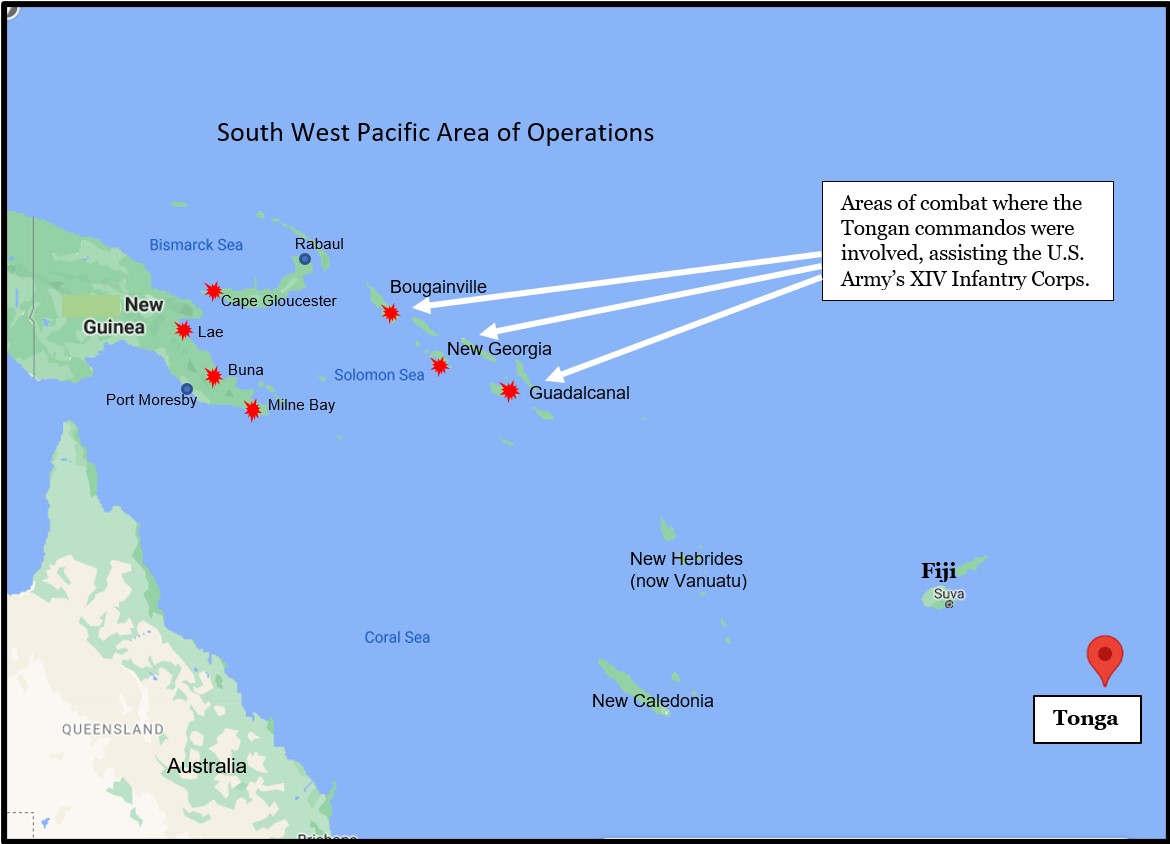
July 4 ‘43: The Tongan platoon was quickly into action on New Georgia’s offshore islands, clearing Japanese outposts.
They were the first Commandos to land at Zanana beachhead, New Georgia, and scout ahead with 40 men of 43d Div US towards the final key objective, Munda Point.

They were the first Commandos to land at Zanana beachhead, New Georgia, and scout ahead with 40 men of 43d Div US towards the final key objective, Munda Point.


July 6: An ambushed US patrol was stranded, with men wounded.
Tongan scouts (Sgt Inukiha’angana, Privates Mahe & Vave) killed 5 enemy & retrieved 2 badly wounded Americans.
Vave (Vah-Veh), with a bullet in each leg and two in one arm, returned to the first-aid station unassisted.

Tongan scouts (Sgt Inukiha’angana, Privates Mahe & Vave) killed 5 enemy & retrieved 2 badly wounded Americans.
Vave (Vah-Veh), with a bullet in each leg and two in one arm, returned to the first-aid station unassisted.


Sgt Inukiha'angana (left) and Pte Vea Mahe were awarded the American Silver Star & the Military Medal for gallantry under fire.
Later, Inukiha’angana was returning to his unit from hospital when his ship was torpedoed.
After hours drifting in the sea, he was saved and returned.
Later, Inukiha’angana was returning to his unit from hospital when his ship was torpedoed.
After hours drifting in the sea, he was saved and returned.

18/
After the war the two #Tongans were presented with the Military Medal by the Governor-General of New Zealand.
Sadly, Simote Vea Mahe died soon after the war, in 1949, aged just 32.
Sione Inukiha’angana died in Auckland in 1987, aged 68.
After the war the two #Tongans were presented with the Military Medal by the Governor-General of New Zealand.
Sadly, Simote Vea Mahe died soon after the war, in 1949, aged just 32.
Sione Inukiha’angana died in Auckland in 1987, aged 68.
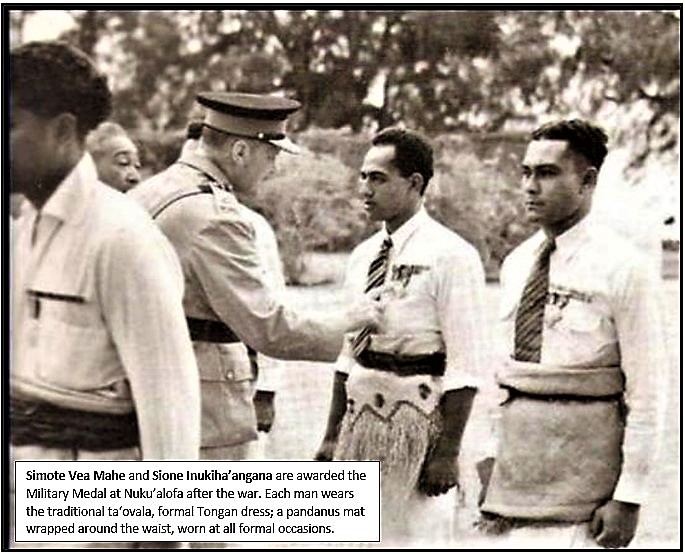
8 July: The US 3/169th Bn was out of rations. The Commandos shared what they had w/ them.
Rations & wounded were carried up and down the river in local canoes.
10 July: The first Commando casualty was a #Fijian, Pte Sailosi, killed by friendly fire in a chaotic enemy night attack
Rations & wounded were carried up and down the river in local canoes.
10 July: The first Commando casualty was a #Fijian, Pte Sailosi, killed by friendly fire in a chaotic enemy night attack

20/
The Commando Guerrillas’ strategy differed drastically from the American policy of “go forward behind a blaze of fire.”
The Commandos moved quietly and carefully, tactically using grenades and Owen guns from close range, getting behind the foliage that concealed the enemy.
The Commando Guerrillas’ strategy differed drastically from the American policy of “go forward behind a blaze of fire.”
The Commandos moved quietly and carefully, tactically using grenades and Owen guns from close range, getting behind the foliage that concealed the enemy.

21/
11 July: Lt Ben Masefield, with 4 Tongans, was deep in enemy territory, scouting the Lambeti (coastal) trail ahead of US troops and moving along it to the very outskirts of the heavily-defended Munda airfield.
Troops of the Japanese 229th Regiment were all around.

11 July: Lt Ben Masefield, with 4 Tongans, was deep in enemy territory, scouting the Lambeti (coastal) trail ahead of US troops and moving along it to the very outskirts of the heavily-defended Munda airfield.
Troops of the Japanese 229th Regiment were all around.


During a US artillery barrage attacking Munda Field, a shell killed Masefield and badly wounded two Tongans.
His death was a shocking blow to his unit.
His men were exhausted, and this sudden blow hit their morale hard.
No words could describe the respect his men held for him.



His death was a shocking blow to his unit.
His men were exhausted, and this sudden blow hit their morale hard.
No words could describe the respect his men held for him.
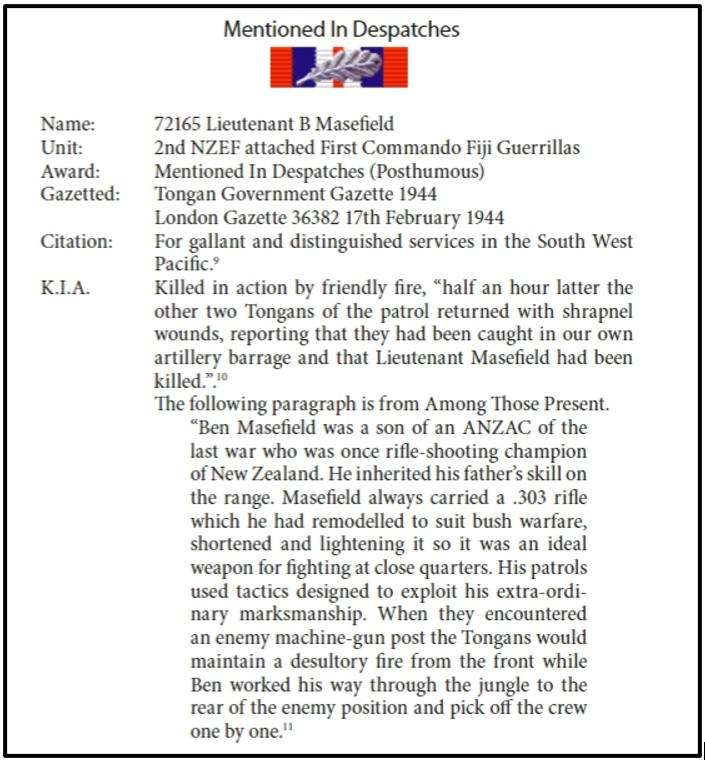



23/
On the afternoon of the next day, 12th July, Captain Tripp was leading the 1st Guerrilla Commandos’ 23 Tongans in guiding the US 172nd Regiment south towards Laiana beach, surrounded by jungle.
Laiana was to be used as a forward staging point for the blocked advance to Munda.
On the afternoon of the next day, 12th July, Captain Tripp was leading the 1st Guerrilla Commandos’ 23 Tongans in guiding the US 172nd Regiment south towards Laiana beach, surrounded by jungle.
Laiana was to be used as a forward staging point for the blocked advance to Munda.

Tongan scouts detected enemy MG positions at the Munda and Lambeti trail junction.
To avoid them, the patrol cut the corner and struck the trail further south.
Just after they had silently passed a clearing, there was a blast of gunfire.
A strong Japanese force had ambushed them.
To avoid them, the patrol cut the corner and struck the trail further south.
Just after they had silently passed a clearing, there was a blast of gunfire.
A strong Japanese force had ambushed them.

The Americans withdrew.
The commandos were then cut off.
After a short, fierce ruthless battle, they had to split into small groups.
Over 12 gruelling hours they crawled back to HQ.
At the height of the confused battle Lt Taliai, & a Fijian medic, Nataliga Uraia, had been killed.

The commandos were then cut off.
After a short, fierce ruthless battle, they had to split into small groups.
Over 12 gruelling hours they crawled back to HQ.
At the height of the confused battle Lt Taliai, & a Fijian medic, Nataliga Uraia, had been killed.
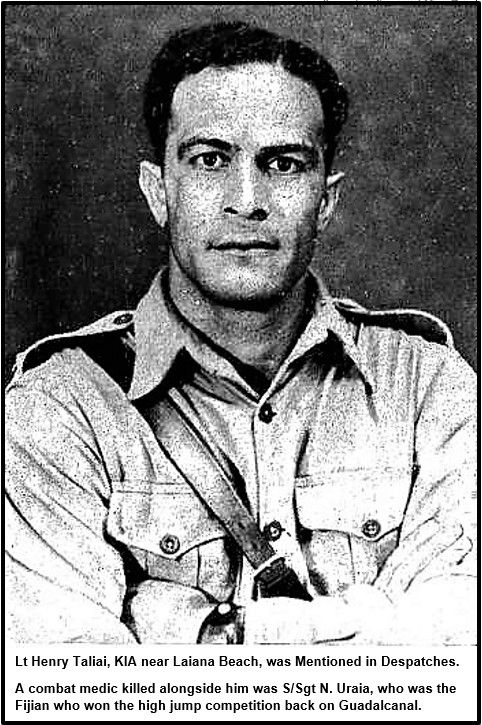

Capt. Tripp, with some Tongans, killed an onrushing enemy.
A bullet knocked him down. It had struck his cigarette lighter and cartridge clip, saving him.
He shot another Japanese who was firing at his men. When darkness came, he crawled back to HQ, scouting enemy posts on the way

A bullet knocked him down. It had struck his cigarette lighter and cartridge clip, saving him.
He shot another Japanese who was firing at his men. When darkness came, he crawled back to HQ, scouting enemy posts on the way
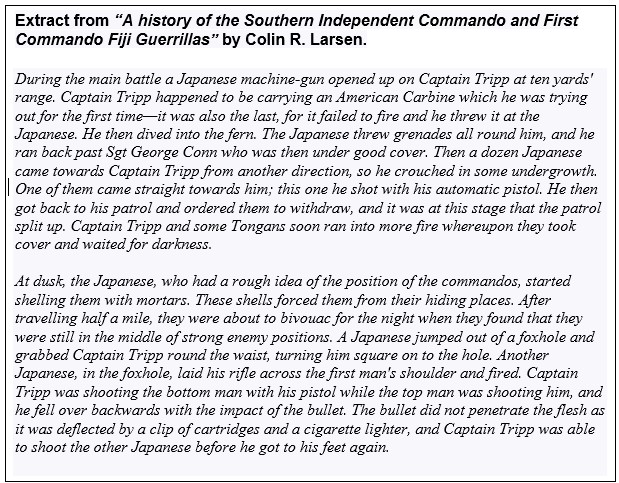

27
The Tongans had now lost both officers and Sgt Conn (a New Zealander whose body was never found).
Their work had, however, enabled US forces to overcome the Japanese and establish the most important bridgehead for the operation, at Laiana, only 5 km from the Munda airfield.

The Tongans had now lost both officers and Sgt Conn (a New Zealander whose body was never found).
Their work had, however, enabled US forces to overcome the Japanese and establish the most important bridgehead for the operation, at Laiana, only 5 km from the Munda airfield.


Six days later, Siope Tafa MID was in of a small group of Fijian commandos who, by chance, were at the US 172 Regt HQ area at Zanana Beach.
As night fell a large Japanese raiding party attacked, screaming, out of the jungle.
They attacked repeatedly all night, but were held off.

As night fell a large Japanese raiding party attacked, screaming, out of the jungle.
They attacked repeatedly all night, but were held off.


On July 27 a Tongan patrol leading some US troops ambushed six Japanese on the Bairoko Trail, north of Munda. The unwary enemy were killed.
The officer’s pocket contained useful information and his “Shin Gunto” sword was later presented to their Queen in Tonga as a trophy of war.

The officer’s pocket contained useful information and his “Shin Gunto” sword was later presented to their Queen in Tonga as a trophy of war.


By August 1944 most of the Commandos were exhausted, infected with malaria and fevers.
Their active members had dwindled to just six.
In May 1944 it was decided to demobilise the platoon due to illness and fatigue. END



Their active members had dwindled to just six.
In May 1944 it was decided to demobilise the platoon due to illness and fatigue. END




Correction: The first date above "...By August 1944..." should be August 1943. Apologies for the confusion.
There was a Second Tongan Commando Platoon, which was attached to Second Commando Fijian Guerrillas in Fiji in Nov 1943 and then moved to Bougainville with them, Feb 1944.
There was a Second Tongan Commando Platoon, which was attached to Second Commando Fijian Guerrillas in Fiji in Nov 1943 and then moved to Bougainville with them, Feb 1944.
• • •
Missing some Tweet in this thread? You can try to
force a refresh











